Today’s post focuses on how to sell an RV. We chose this topic because there’s a whole lot of RV buying and selling going on out there these days for all sorts of reasons. The demand for new RVs is high, but supply is inordinately low. This makes the market for used RVs very hot. ????
Many people bought and enjoyed RVs over the past couple of years, and are now ready to sell, while buyers are waiting in droves as RV production slowed during the pandemic and shipping has been regularly interrupted.
The pandemic has made RVing even more attractive than it once was due to the fact that owning a self-contained rig gives us access to private sleeping, eating, bathing, and toilet facilities, even as we travel. Moreover, the pandemic has screamed that if you’ve ever had a dream, now’s the time to pursue it, because time isn’t a guarantee in this life.
With all of this (and more) in mind, let’s take a look at some useful pointers on how to sell an RV…because if you’re ready to sell, there’s a buyer out there for you.
Here’s how to do it right…
-
1)
How Do I Prepare My RV for Sale?
- 1.1) Make Necessary Repairs
- 1.2) Clean the RV Inside & Out
- 1.3) Make a List of Issues (Major & Minor) to Disclose to Potential Buyers
- 1.4) Check All Appliances
- 1.5) Add Water to the Fresh Water Tank to Allow Potential Buyers to Test Plumbing Features
- 1.6) Check Required Inspection Date
- 1.7) Charge House Batteries
- 1.8) Test The Generator
- 1.9) Get All Documents Including Repair Receipts Organized in a Folder
- 1.10) Take Multiple Photos of the Inside & Outside of the RV
- 1.11) Check/Repair Roof Sealants
- 1.12) Price Your RV
- 1.13) Write a Strong, Thorough Description Including Something About the History of the RV
- 2) How Do I Find Out How Much My RV Is Worth?
- 3) How Much Does an RV Depreciate Per Year?
- 4) How Do I Write a Bill of Sale For My RV?
- 5) How Do I Safely Accept Payment For My RV?
- 6) Where Is the Best Place to Sell an RV? (How Do I Advertise My RV For Sale?)
- 7) Additional Tips for Selling Your RV
How Do I Prepare My RV for Sale?
The first consideration once you’ve decided to sell your RV is to prepare it for sale. There are a number of steps to take to do this properly, and it’ll be worth your while to pay attention to them.
Taking the following steps will not only solidify your honorable integrity as a seller, but it will also guarantee that you’ll get top dollar for your rig.
As we write this, it’s a seller’s market. Prepare your RV well, and you’re likely to be rewarded with a fine profit.
Make Necessary Repairs
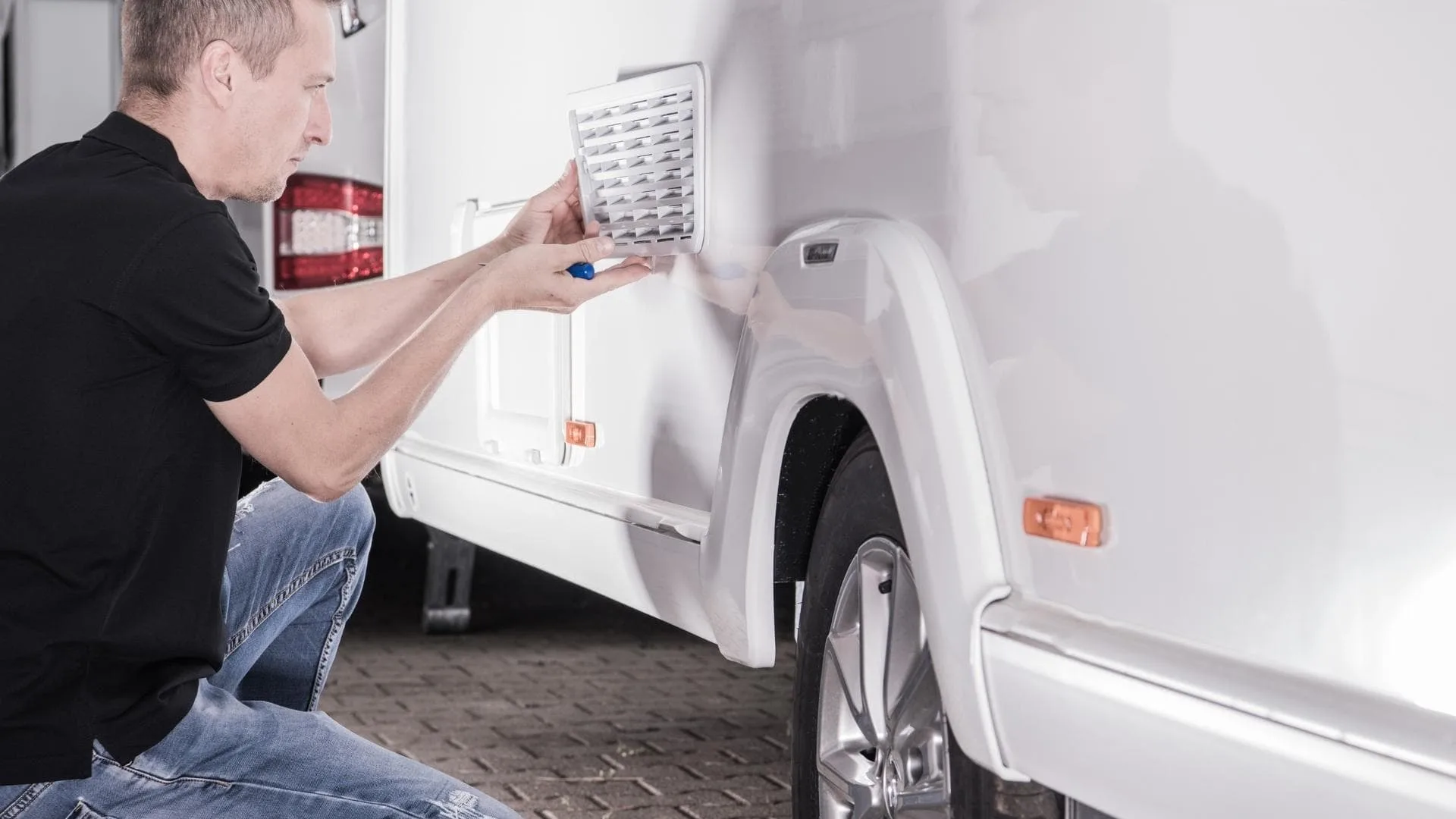
Begin preparing your RV for sale by making any necessary repairs.
It’s important to make all the repairs you can afford to make prior to selling your RV. You’re likely to recoup your investment in the end, and you’ll be selling a rig that doesn’t plague the buyer with unknown issues that can result in everything from frustration & inconvenience to downright danger.
If you know of issues that you can either repair well yourself or can have repaired by a professional, and if you can afford to do so in advance of putting your rig on the market, take the initiative, as it will benefit you and your buyer in the end.
Be sure to retain receipts for all professional repairs as well as new parts you may have used to repair issues yourself so that you can present them to potential buyers as proof of work that has been done.
Clean the RV Inside & Out
Present your RV to potential buyers in its best condition. This means taking the time to clean the interior, (including all storage areas from a tiny glove compartment to the basement storage on the rig), and to wash and wax the exterior prior to showing it, raising its level of presentation just as you would do with a house you’re offering for sale.
You can do this yourself with some time and elbow grease, or you can pay a professional detailer to do the work for you. Either way, you’ll benefit from giving potential buyers a good impression of your RV (and how you’ve maintained it). You only get one chance to make a first impression… so be sure it’s a good one!
Make a List of Issues (Major & Minor) to Disclose to Potential Buyers
If there are repairs or issues that you can’t afford to tend to, or if your rig has some idiosyncrasies that would benefit a buyer to know about, make them clear from the outset. “This automatic switch doesn’t work so we have to manually switch it over in order to use the air conditioning. The cost to repair it was quoted at $700, and it wasn’t worth it to us just to not have to manually move the lever so we left it this way.”
That’s the sort of thing we mean when we refer to idiosyncrasies. Bring everything out into the light of day so that there’s nothing you’re aware of that you’re not sharing with the buyer. This sort of honesty may be rare among sellers, but that doesn’t make it any less important. It’s a key part of establishing trust with your buyer(s), which will go a long way toward making the whole process more enjoyable for everyone involved.
Check All Appliances
Prior to putting your RV on the market, check all appliances to make sure they’re all functioning as they should. There’s nothing worse than reading an ad that says “everything works as it should”, then spending the time and money to travel to see a rig you’re interested in buying, only to try the appliances to find that something of consequence isn’t working.
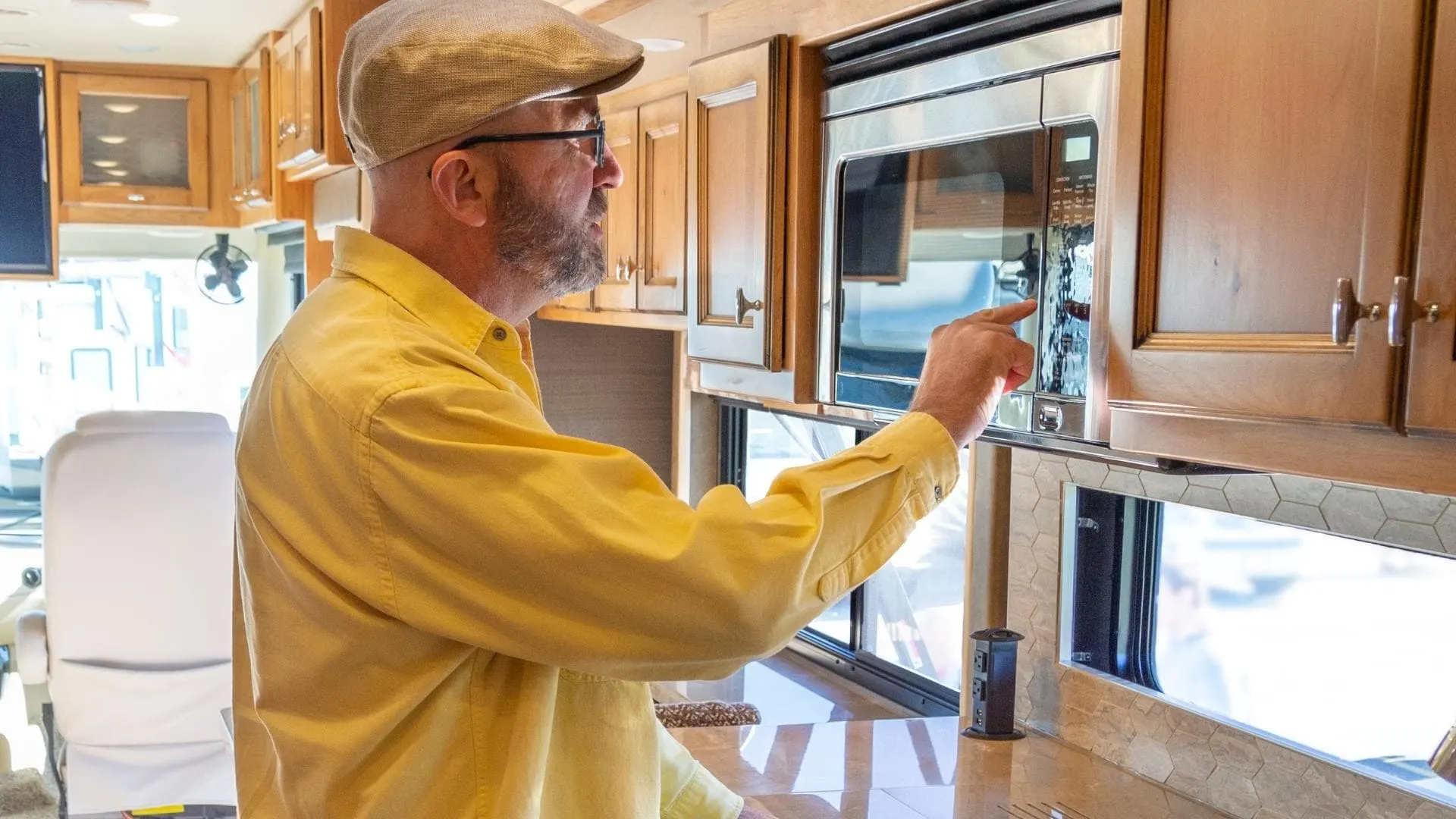
Check all of your RV appliances to make sure they’re working correctly prior to putting your RV on the market.
Make sure the fridge gets cold, the water heater delivers hot water, the microwave works when the rig is plugged in or the generator’s running, when you turn on the heat in the RV, the rig warms up, and when you turn on the AC, the rig cools down. If you have a washer & dryer in your rig – or any other appliance we haven’t listed here – make sure they’re ready for a complete demonstration.
If you test your appliances and something doesn’t work and you don’t want to repair it, see #3 above and disclose the issue in your advertisement. “Everything works except the microwave, which needs to be replaced.”
This lets potential buyers know what’s in store, and gives you both points to negotiate pricing.
Add Water to the Fresh Water Tank to Allow Potential Buyers to Test Plumbing Features
Don’t leave your RV dry and expect to get away with, “Everything works – there’s just no water in the tank right now and I have no way to hook up.” No one’s going to fall for that one.
Your prospective buyers are going to want to be able to run the water from every faucet & showerhead, (inside and outside), and they need to be able to flush the toilet. They need to hear the water pump switch on and off appropriately, and they need to be able to look around and see that nothing is leaking.
Of course, if your RV is stored in a cold climate and has been winterized already, this may be an impediment. But be aware that this could deter some potential buyers.
Check Required Inspection Date
If you live in a state that requires an inspection, make sure the inspection is up to date. If it’s not, then have the rig inspected. This is often an excellent selling point for prospective buyers because they feel that if a state-authorized inspection station looked the rig over and found it worthy of an inspection sticker in their name, they can rest easy on some of the major systems for at least the next year or two.
State inspections generally include some pretty big-ticket items like tires, brakes, shocks, axles, exhaust systems, and a hunt for rust. So if a buyer sees evidence of a recent inspection, that’s a good drawing card for the seller.
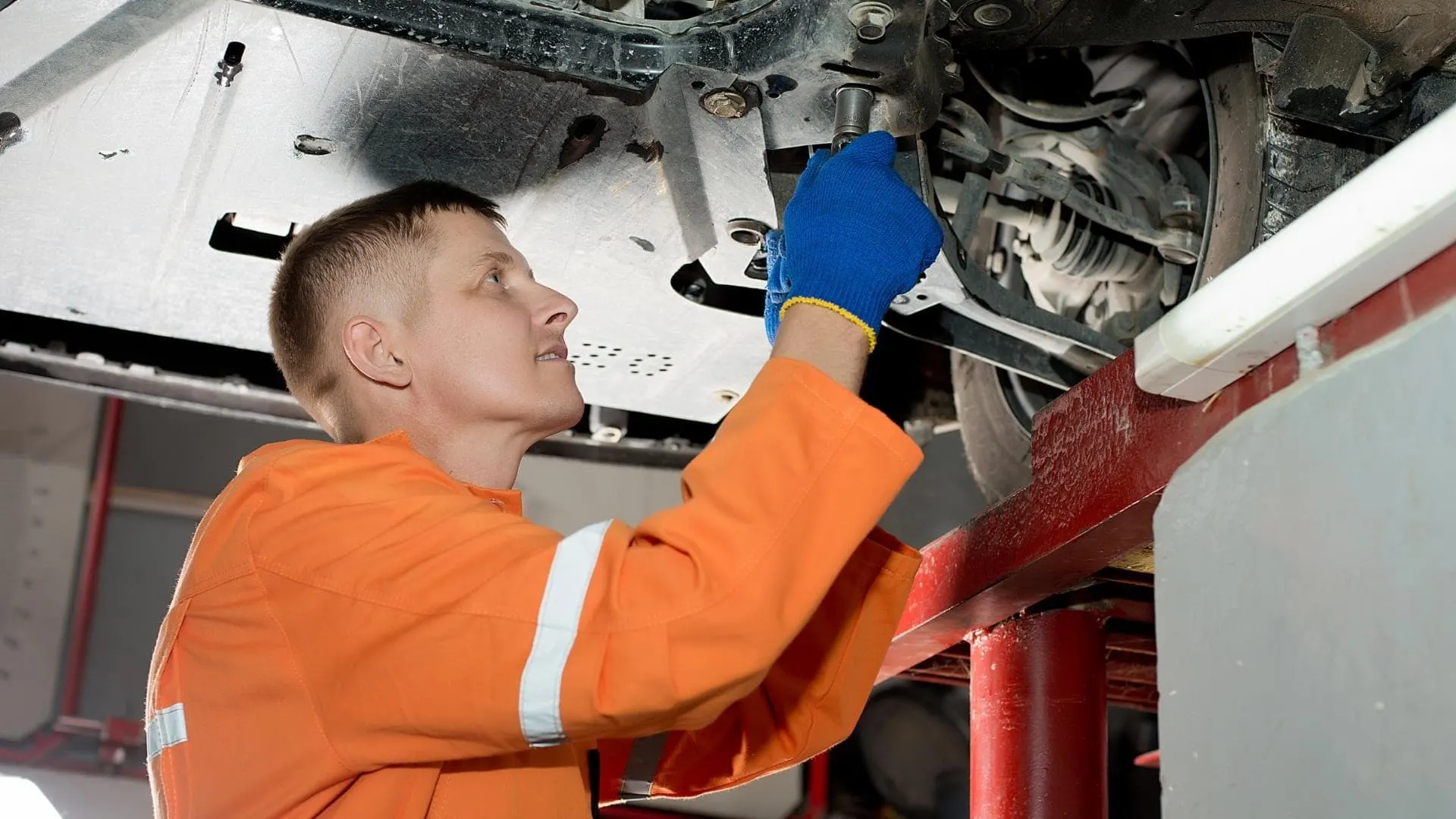
If you live in a state with state vehicle inspection laws, be sure to have your RV inspected prior to putting it on the market. This offers considerable reassurance to potential buyers.
Charge House Batteries
Prior to showing the rig to a prospective buyer, charge your house batteries so the buyer can see that the electrical system is working, on and off the grid.
Leaving the RV plugged into shore power only demonstrates that the electrical system is functioning on shore power. Charging the batteries ahead of time will demonstrate that the batteries will at least hold a charge long enough to demonstrate your properly functioning electrical system, with and without shore power.
If you’ve got relatively new batteries or batteries in excellent condition, take the time to demonstrate this to potential buyers by using a multimeter or by offering them a look at the receipts from the purchase of the batteries.
Anything that reassures a potential buyer that he/she/they won’t have to deal with that particular item as a new owner is usually worth doing.
Test The Generator
If your RV has a built-in generator, test it to make sure it starts. Many RV generators require a certain minimum of fuel to operate. Be sure your rig’s fuel tank is filled to at least that minimum or you’ll risk your generator not starting when prospective buyers ask to test its running condition.
Be prepared to demonstrate that the generator continues running under load by running the house AC unit(s) which is often the appliance buyers are most interested in making sure runs adequately.
Get All Documents Including Repair Receipts Organized in a Folder
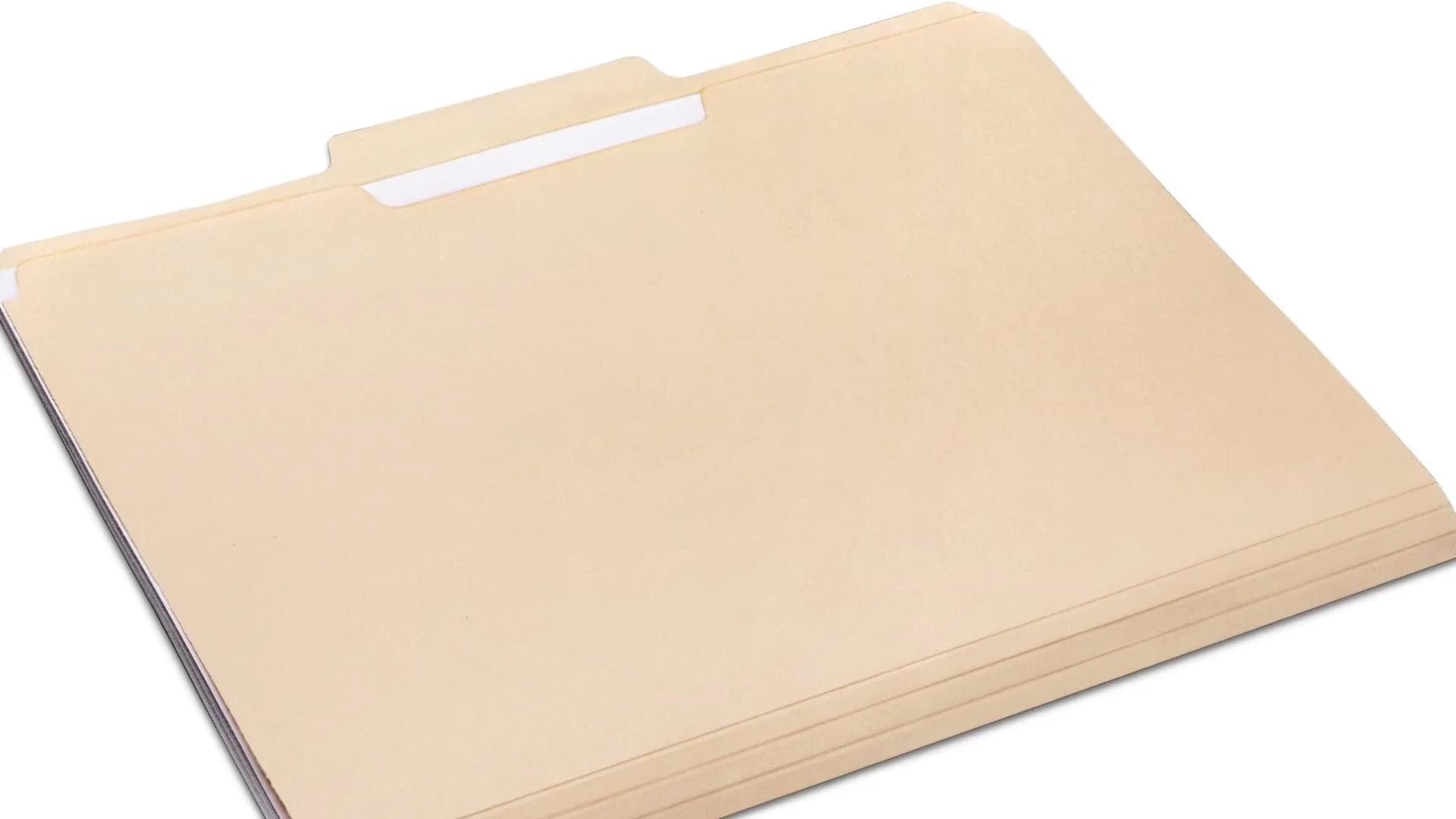
Organize all documents related to your RV in a file folder or binder. Include repair receipts, receipts for parts you’ve purchased, and all documents from any previous owner.
Any documents that you have, including those from any previous owners, all repair receipts, and receipts for new parts or items with which you’ve upgraded the rig, should be organized in a folder for prospective buyers to look through, and for your ultimate buyer to keep.
Again, providing this kind of information upfront can help to establish a sense of trust that you’ve been a responsible owner who has cared for their RV.
Take Multiple Photos of the Inside & Outside of the RV
Take detailed interior and exterior photos of your RV. No one likes an ad that has just two exterior photos of an RV, and no one wants to waste time requesting photos of everything they’re interested in seeing before they invest the time and expense to visit your RV to see the rig in person.
Give prospective buyers the opportunity to decide how interested they are in your rig right from the point of the advertisement itself. Some forums will only allow a few photos, and in those cases, you have no choice but to display your few best photos and offer buyers the opportunity to email you for additional photos.
But, if you have the opportunity (which you will in forums such as Craigslist, eBay, and Facebook Marketplace) to display a significant number of photos, take advantage of that option.
Either way, be sure to take multiple very good photos of the exterior and interior of the rig to share with interested buyers.
Important note: If there’s any damage to the RV at all, share that upfront. You don’t want to waste your time showing the RV, nor do you want potential buyers to waste time and money coming to see your RV if there’s something obvious that could discourage them from the purchase from the get-go. Give them that opportunity. It will save you both time and frustration.
Is there an area of rust on a floorboard? Photograph that and share it upfront. Did you back into a stone wall at a campsite and leave a dent in the bumper? Make a narrow turn and scrape the side of the RV? Make those things clear from the outset. That way you’ll weed out anyone looking for perfection in a used RV, and you’ll find yourself left with the folks who remain interested in buying your rig despite that scrape or bumper dent.
Check/Repair Roof Sealants
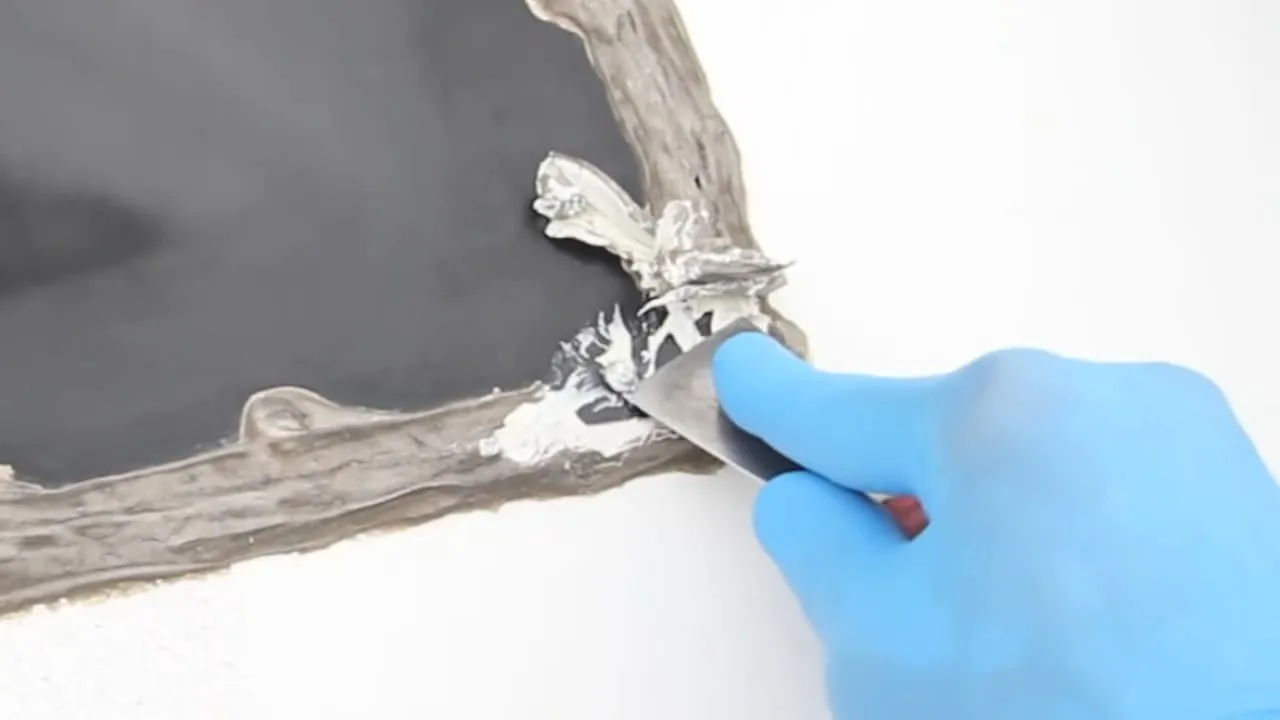
Check the condition of your RV’s roof and repair any sealants that have cracked, weathered, or aged.
Everyone knows that an RV roof in good condition is a coveted thing. No one wants an RV with a roof that may have been leaking due to aging or damaged sealants. Hopefully, you and any previous owner have followed regular roof maintenance techniques to prevent roof leaks.
Prior to selling your rig, checking the condition of the Dicor and any other roof sealants is a very good idea. A savvy buyer will either ask to inspect the roof or to have a thorough inspection conducted by a professional. Be prepared for that inspection by taking care of the roof of your rig. Otherwise, you may well find yourself with a delayed sale or a price negotiated significantly downward accordingly.
Price Your RV
Once you’ve taken your rig’s condition into consideration (including any issues, non-working appliances, etc.), price your RV fairly. By this, we mean to be fair to yourself as well as to your potential buyer.
If, for example, the buyer will need to replace all the tires on the RV, take that into consideration when setting your price, and state as much in your ad. If a major appliance like the refrigerator needs to be replaced, be sure to state this in your ad and price the rig with an understanding that the buyer will need to shell out another $1,500 for a new fridge.
Determine in advance the price you want, and list your asking price a little higher, because chances are good that a prospective buyer is going to want to negotiate. With that said, though, it’s important to be able to arrive at a price that’s fair to both the buyer and the seller.
Write a Strong, Thorough Description Including Something About the History of the RV
A thorough description of the RV you have to offer will go far in getting buyers to your door. No one likes an ad that only lists the year, the mileage, and the price. And frankly, you don’t want to answer 75 calls or emails answering the same questions over and over and over again (do you?!).
Write a good, strong description of the RV as it is, and include its history of ownership, maintenance & repair, and use. This will be very helpful in weeding out the serious buyers from the not-so-serious and will save you and your potential buyers a lot of time and energy.
How Do I Find Out How Much My RV Is Worth?
In addition to the condition of the rig, there are two things to consider when pricing your RV. The first is its value as determined by pricing structures such as those offered by the NADA’s RV section, (NADA = National Automobile Dealers Association), and the second is the RV market itself.
For example, as we write this post, the seller has an advantage in the RV market. This is because supply is low and demand is high – it’s that simple.
Therefore, if you find your RV to be valued at a certain price when you consult the NADA, you need to also investigate the current RV market in general as well as the market for your particular type of RV.
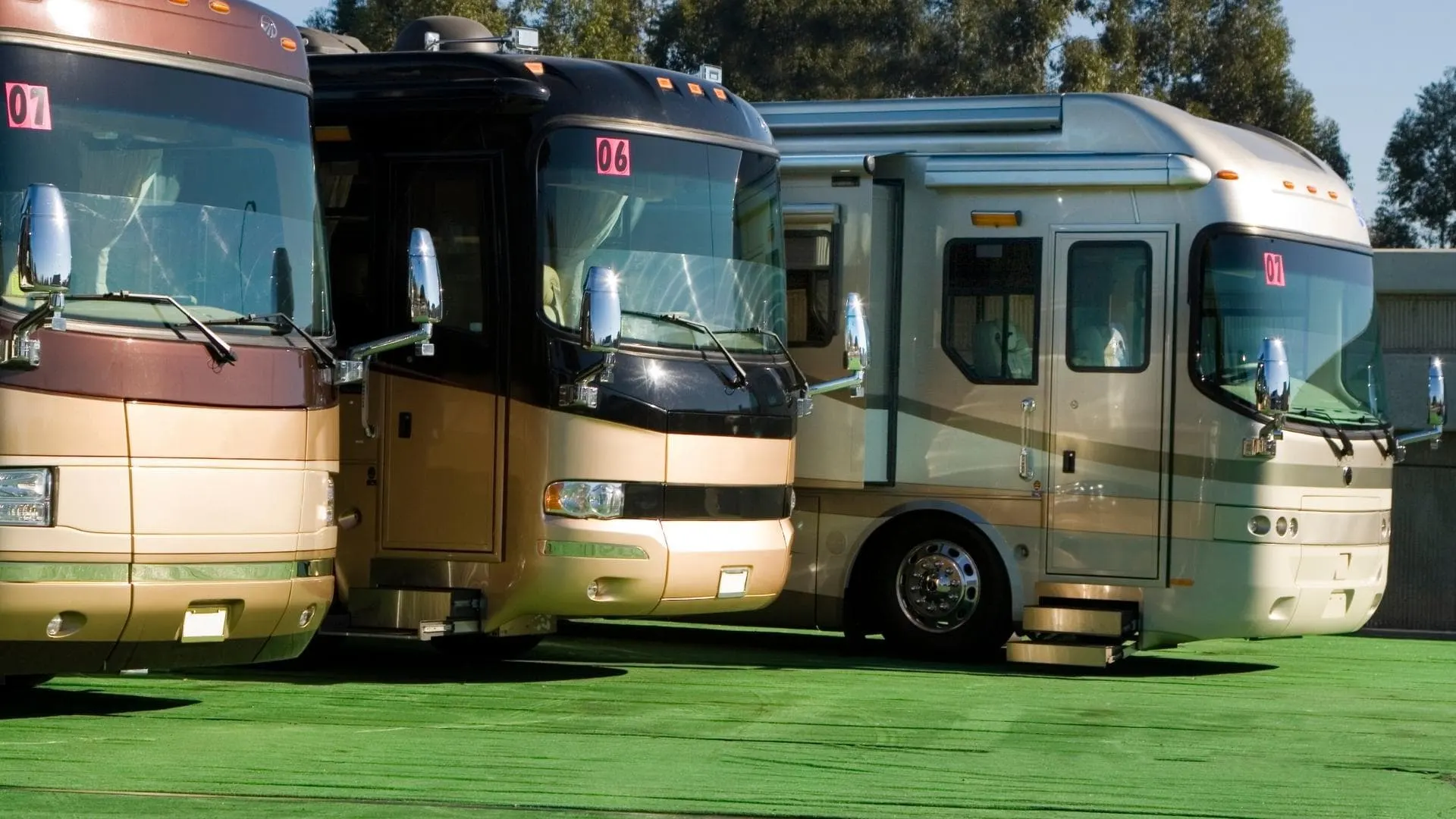
Used RV prices are determined partly by book value and partly by market conditions.
Chances are good that your RV may be worth more on the market than the NADA value represents. This is often an issue with RVs. For example, a 2005 Newmar Mountain Aire might be valued at a certain price that takes its age into consideration, but it can’t possibly take into consideration the excellent condition we’ve kept our Newmar in for all these years. One would never guess this is a 2005 motorhome to look at it inside, outside, and mechanically, or with regard to any appliance or the general condition of the rig.
So – the NADA book value can only go so far. It’s a starting point, but the market and the condition (good or bad) of your particular rig needs to be factored in as well.
How Much Does an RV Depreciate Per Year?
A number of factors influence depreciation, but with those aside, in general, an RV depreciates on average around 8% per year with the exception of the first year of the life of the RV. Depreciation on a brand new RV, (depending on the make and model), is at least 10-15%, and can be as high as 25%!
How Do I Write a Bill of Sale For My RV?
A Bill of Sale doesn’t have to be particularly complicated. A simple one is perfectly acceptable, as long as you include all pertinent information. This would include:
- Name and address of both the buyer and the seller
- Year, make and model of the RV
- VIN (Vehicle Identification Number)
- Price
- Mileage
- Date of the transaction
- And the fact that the RV is being sold free and clear and in “as is” condition
In some states, additional information may be required, and you should research this prior to using any Bill-of-Sale template. For example, some states require that a Bill-of-Sale be signed not only by the buyer and seller but also by a witness. Some states may require notarization of a Bill-of-Sale.
There are many templates available online that can be printed and filled in with pertinent information, but you’ll need to make sure you’re including everything required by your state. Otherwise, the buyer will have difficulty obtaining a new title and this will create headaches for both of you.
This wikiHOW article spells everything out in detail, and a general Google search for “RV Bill-of-Sale templates” should give you any number of templates to print.
How Do I Safely Accept Payment For My RV?
Unfortunately, this has become a more pressing question in recent times. The sale of an RV usually involves a large sum of money, and it’s very important that you do everything in your power to avoid a fraudulent transaction.
Our best advice is that the transaction takes place at your bank. This way you’re assured that the transaction is being properly monitored in a bank setting, and fraud is most likely to be avoided.

For the protection of all parties, it’s best to make your financial transaction at the seller’s bank if possible.
Where Is the Best Place to Sell an RV? (How Do I Advertise My RV For Sale?)
There are a number of ways to advertise your RV for sale. Following are several of the most common.
- Craigslist
- Facebook Marketplace
- Local Newspaper
- eBay
- RV Trader
- Forums Related to Your Specific RV
- Consignment
- Trade-In
Additional Tips for Selling Your RV
You may wish to find a couple of local shops that can offer a pre-purchase inspection of your rig should a serious buyer request one. Such an inspection would be paid for by the prospective buyer, but you’d have to be willing to take your rig to the shop in question.
Locating a shop (or several if there are a few in your area) that can offer this type of inspection ahead of time saves time for the buyer and seller.
Don’t take your RV off the market during this period. You can answer other prospective buyers’ questions and let them know that you have an interested buyer from whom you’re awaiting an answer. You can then let the other interested buyers know if the RV is purchased or not.
Leave your RV on the market until the money from a buyer is in your bank account.
Geek Out With Us Every Week
Join our newsletter to learn about all things RV-related. Every week we offer free tips, tricks, product reviews, and more to our online community of RVers. So, whether this is your first time on the road or you’re a seasoned expert, we’d love for you to geek out with us!


SHELLEY
Friday 28th of January 2022
How do you handle selling your RV if you still owe on your loan and won’t have a clear title until after you receive full payment from the buyer?
TheRVgeeks
Friday 28th of January 2022
Hi Shelley! I think that would need to be handled like the sale of a car with a loan on it, probably by using a third party, maybe a broker, attorney or notary, to hold money and/or title in escrow. We'd suggest contacting your lender to see what they recommend for procedures to protect both parties, since this is a pretty common situation for them.
Jacques Lemieux
Tuesday 25th of January 2022
Very helpful. Are you going to do the same sort of thing for folks who are looking to buy this year?
TheRVgeeks
Tuesday 25th of January 2022
Thanks, Jacques... and yes, we've got an article about buying an RV on the back burner. Stay tuned! ????
TheRVgeeks
Tuesday 25th of January 2022
Thanks for the suggestion, Jacques! We've added that topic to our to-do list.
Jacques Lemieux
Tuesday 25th of January 2022
There is a site on FB (RV Values and Appraisals) which claims to have very latest data on selling prices on used RV's of all types. Never used them, but there seem to be a lot of folks who are very happy with there service. There is a fee for an appraisal.
Jon
Tuesday 25th of January 2022
And most important of all, do not turn over possession of the RV until it is registered in the buyers name. Should the RV be involved in an accident and still be registered in your name, the initial liability for that accident is yours.
Give the title to the buyer upon payment. Give the keys and possession to the buyer upon evidence of registration in his name.
Alan Dambrov
Tuesday 25th of January 2022
I think you missed one issue on the sale of an RV. Merely closing the deal at a bank doesn't guarantee payment in good funds. At a minimum, payment should be in the form of a certified, cashier's or offixcal bank check. Your bank can help wirh verifying that the payment will be good. To be certain, you should hold the title until payment clears. It should only take a few days to clear a check nowadays. A claim for fraud rarely has any valie.